How to Get Paint off Clothing and Remove the Smell of Paint?

There's nothing quite like a freshly painted room! It can completely transform your space and give your home a new look and feel for you to enjoy. However, when taking on the task of painting ourselves, it can be quite common for some splashes to end up in places they shouldn't, such as our clothing! We'll give you our top tips on what solvents and techniques to use to remove any paint from your clothes.
The smell of paint can also be very strong and irritate the eyes, nose and throat if you aren't careful. By following simple methods like airing out rooms effectively, will help you streamline the painting process. With our ideas, you'll be painting like a professional in no time at all!
Different Types of Water-Based Paint Stains
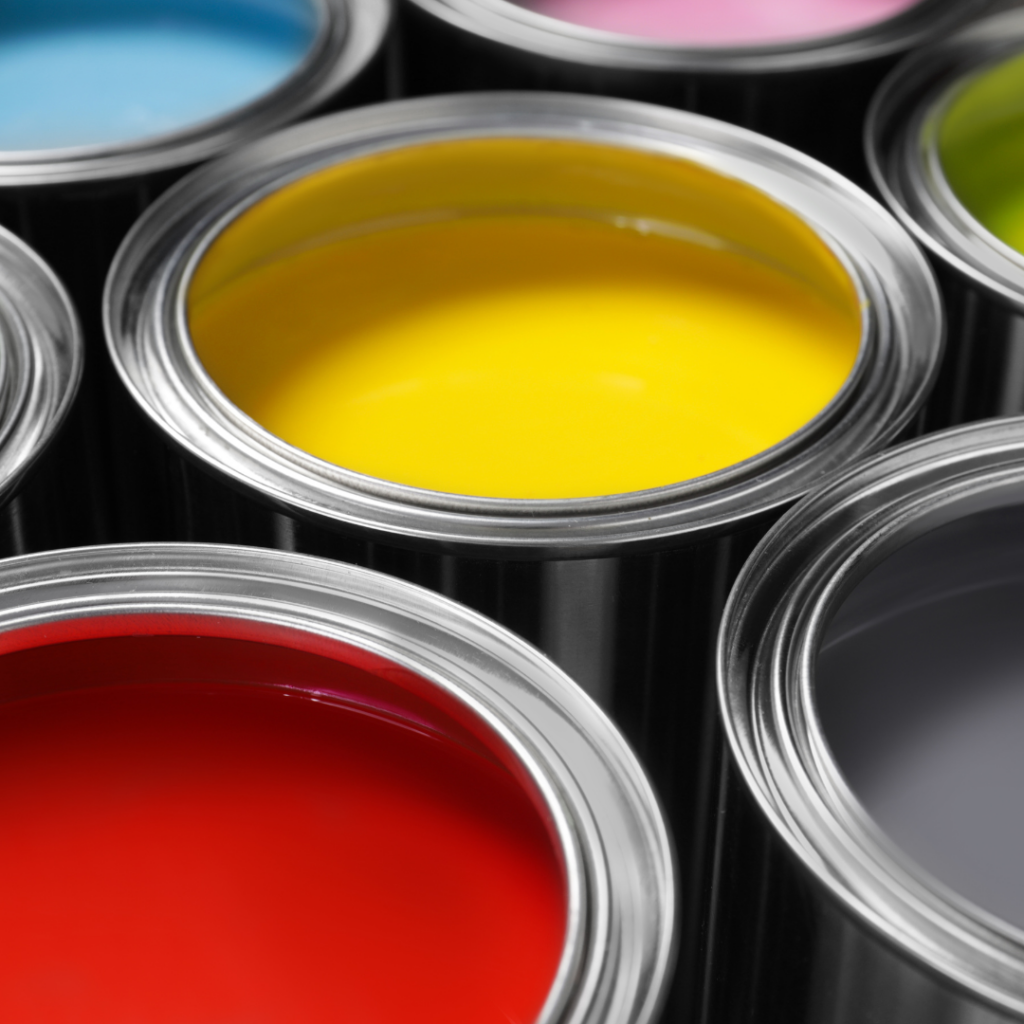
Water-Based Paint
Considered an environmentally friendly paint option, water-based paint uses water as a solvent instead of a petroleum-based solvent like others. As they don't contain any harmful solvents, they are less likely to irritate your skin or eyes. Water-based paint is a popular option due to how versatile they can be. You can choose to paint them on walls, ceilings, furniture and trim. They are also low odour and fast drying, allowing you to complete the job quicker!
Water-based paint is generally easier to remove from clothes than oil-based paint. As it is more soluble in water, it can be dissolved and lifted off fabric using a mild detergent. However, even water-based paint can be difficult to remove if it's allowed to set.
Oil-Based Paint
As it dries to a hard, durable finish, oil-based paint is commonly used for exterior painting. It is resistant to moisture and weathering, making it a great choice for transforming the outside of your home. Oil-based paint also has excellent covering power that is capable of hiding imperfections in the surface. They differ from water based paint in that these types of paints have a strong odour, that can linger for several days. The drying time of oil-based paint is also quite slow, making them difficult to work with.
As oil-based paint is not water-soluble, this makes it more difficult to remove from clothing. In addition, oil-based is a very strong adhesive, meaning it can bond very tightly to the fibres of fabric, making the task even more challenging.
Acrylic Paint

A popular choice for artists and crafters of all experience due to its versatility, ease of use and quick drying time. Many acrylic paints are water-based, but become water-resistant when dry. Acrylic paint is usually inexpensive, making it a great option for artists on a budget.
A drawback to using acrylic paint is that it is tough to remove, should any get on your clothes. As mentioned, it becomes water-resistant when dry. Paint molecules bond together to form a hard shell, resulting it them being difficult to break down and lift off the fabric.
Latex Paint
Also known as a water-based paint, latex paint is a type of paint that uses water as its solvent instead of oil. This makes it less hazardous than oil-based paint and less likely likely to irritate the eyes, nose and throat. Latex paint comes in many forms, such as interior paint, exterior paint and stain-blocking paint. It is non-toxic and fast drying. Due to it's water based nature, it is typically easier to remove from clothes than oil-based paint.
Spray Paint

Also know as aerosol paint, spray paint is a type of paint that comes in a pressurized can. It releases a fine mist when the can is sprayed. It's a popular option for a variety of DIY projects in the home, such as refurbishing furniture and woodworking.
Its important to use it in a well ventilated area if possible to avoid inhaling any fumes. It's also important to avoid getting it on your clothes. Depending on the fabric its stained, it can be a challenge to remove it!
4 Steps to Remove Paint Stains From your Clothes

Immediate Action
It's important to act quickly when removing paint from clothes as the longer the paint sits on the fabric the more likely it is to set. Paint dries and hardens as it cures, making it more difficult for solvents to break down the paint molecules. After rinsing the area with cold water as soon as possible, make sure to blot up any excess paint with a clean absorbent cloth. Do not rub, as this will likely spread the stain!
Identify the Paint Type
Knowing which type of paint your using will help you tackle the stain much easier. For example, there are different removal techniques for water-based based to oil-based ones. Generally, water-based paint is a lot easier to remove from clothing due to how it's made. Always read your paint tins to learn what type of paint it is. This will help you choose a suitable solvent should any get on your clothes.
Choose the Right Solvent
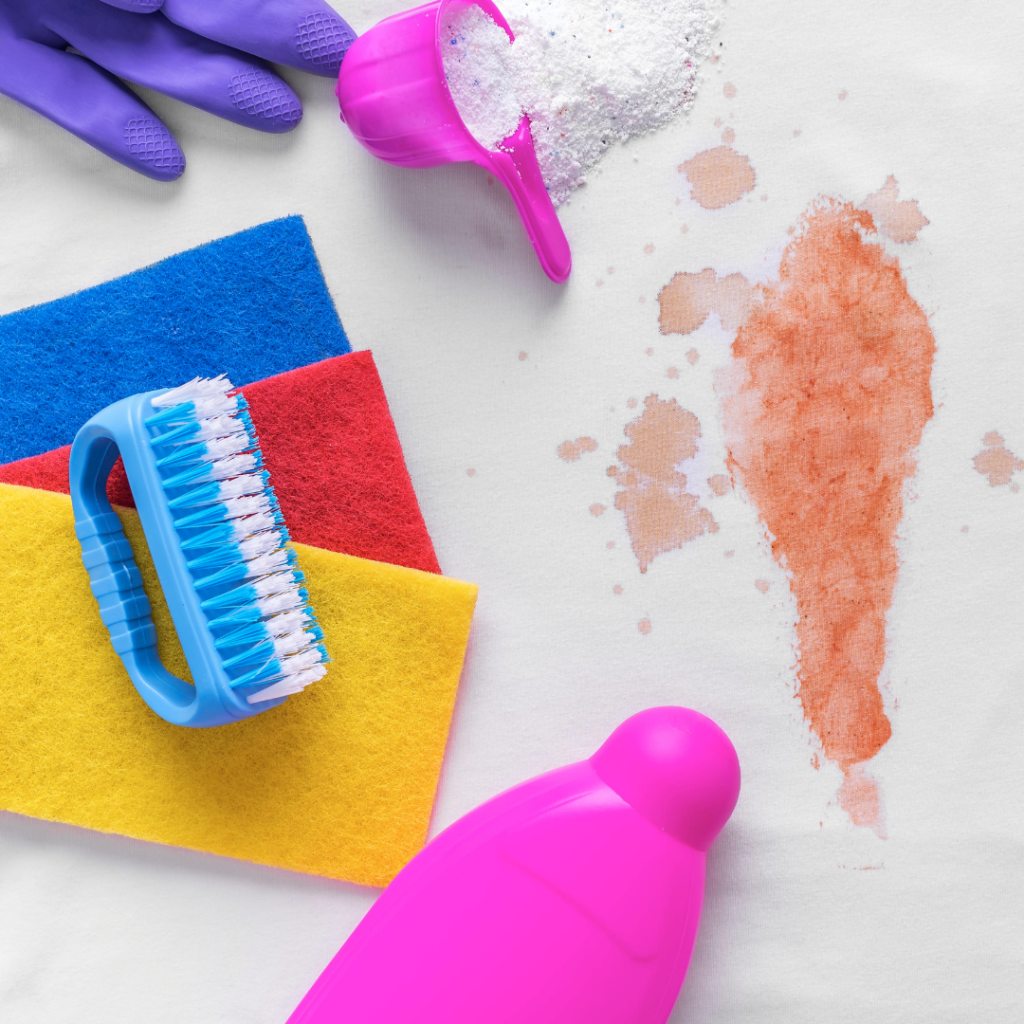
Using the right solvent for the job can be the difference between getting the paint stain out and it staying on your clothes.
Latex and Water-Based Paint
There are couple of tried and tested solvents that can be used to remove both laetx and water-based paint from clothes. Dish soap, rubbing alcohol and white vinegar can help you break down paint molecules and return your clothes to their previous condition. With all these solvents, you should apply a small amount to the stain, let it sit for a few minutes, then blot it up with a clean cloth.
Oil-Based Paint
As oil-based paint is more difficult to remove, you should use strong solvents to help get the job done! Mineral spirits, acetone and paint thinner can all be effective to get rid of paint from clothes. It's important to test any kind of solvent on a hidden area of the fabric to make sure it doesn't damage the material.
Wash and Rinse Carefully
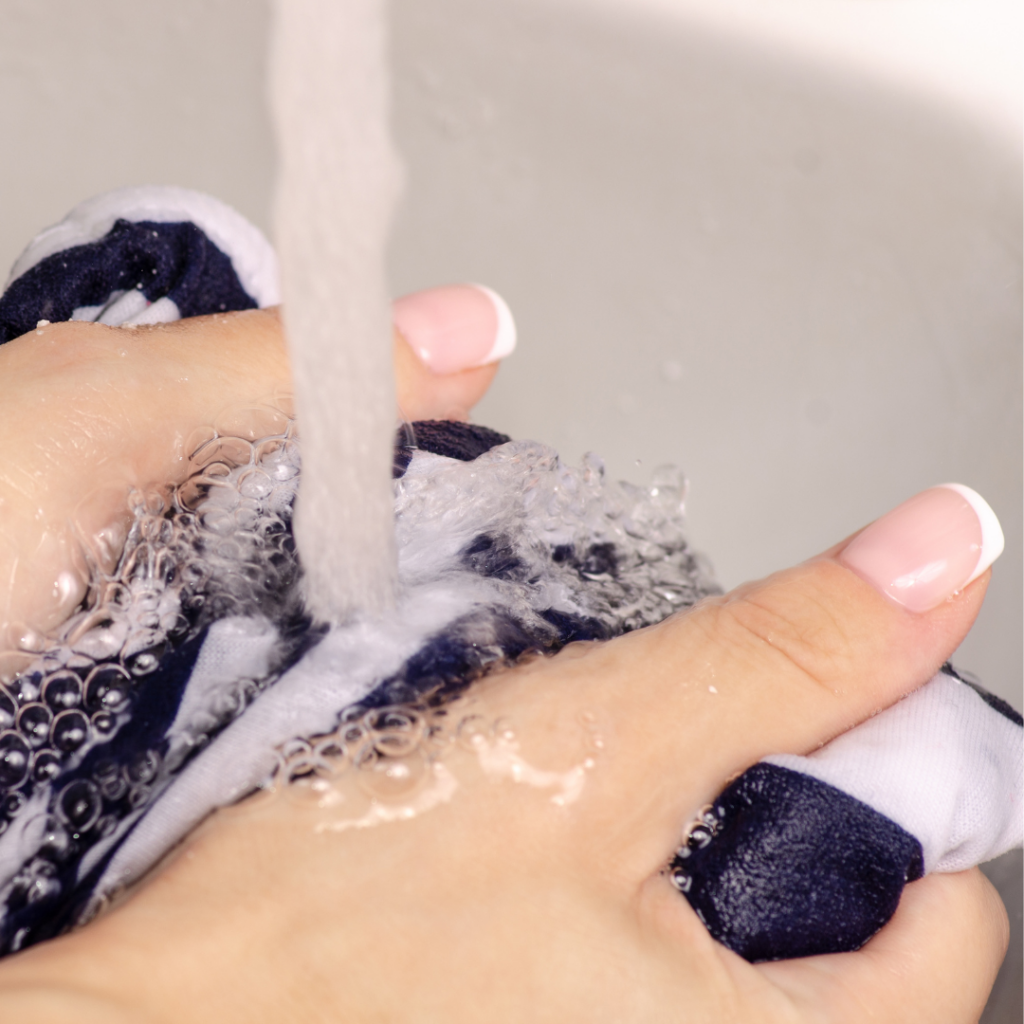
The last step, but no less important than those before it, is washing and rinsing your clothes. This final step helps prevent damage to the fabric, as well as removing all traces of the initial stain and solvent. Here are 5 of our top tips to follow after removing paint stains.
- Rinse the treated area thoroughly with cold water. Use a clean cloth to then blot the area, not rub it.
- Pre-treat the stain with laundry detergent if necessary, before washing it. Apply a small amount directly to the stain and let it sit for 10-15 minutes.
- Wash the clothes in the hottest water recommended for the fabric to help dissolve any remaining solvent or stain residue.
- Rinse the clothes clothes to ensure that all traces of the solvent and stain remover are gone.
- Make sure to air-dry your clothes and check to see if the stain is gone before ironing. This will avoid any heat making the damage worse.
Can you Get Paint out of Clothes After They've been Washed and Dried?
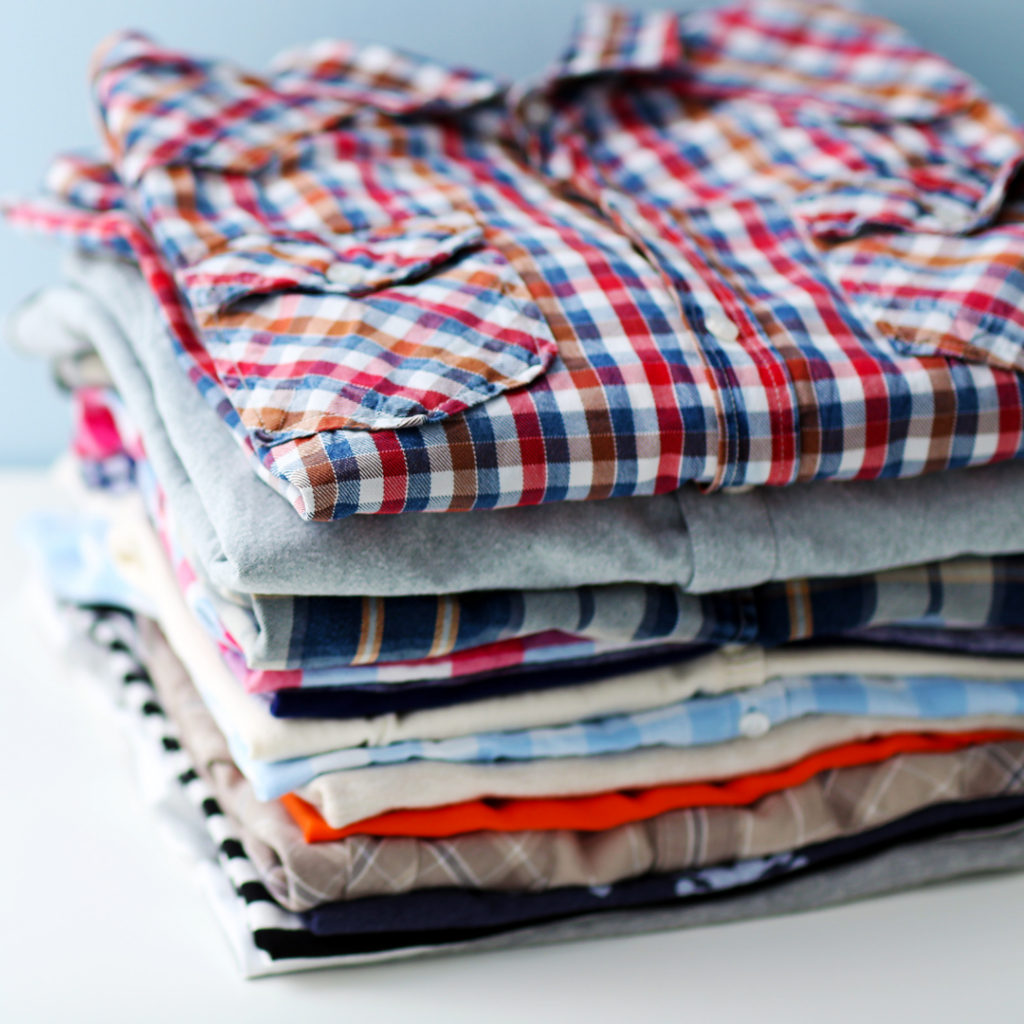
What happens if you only realise there was a paint stain you missed, after your clothes have been washed and dried? Don't panic, we've put together a few tips you can try to remove this stubborn stain!
Act Quickly - Wet the stained area once again with water to rehydrate the paint, making it easier to work with.
Scape Off Excess Paint - Use a blunt knife, spoon or even the edge of a credit card to gently scrape off as much of the dried paint as possible.
Re-apply a Solvent - Dampen the stained area with the appropriate solvent based on the type of paint. Allow it to penetrate the dried paint for a few minutes, then gently blot with a clean cloth.
Repeat Stain Removal Techniques - Begin working in small sections, gradually loosening the paint with each application.
Wash Again - After treating the stain, wash the item of clothing once again in line with it's care instructions. Check the stain before drying and avoid using heat until you are happy the stain is removed.
Preventing Paint Stains in the Future
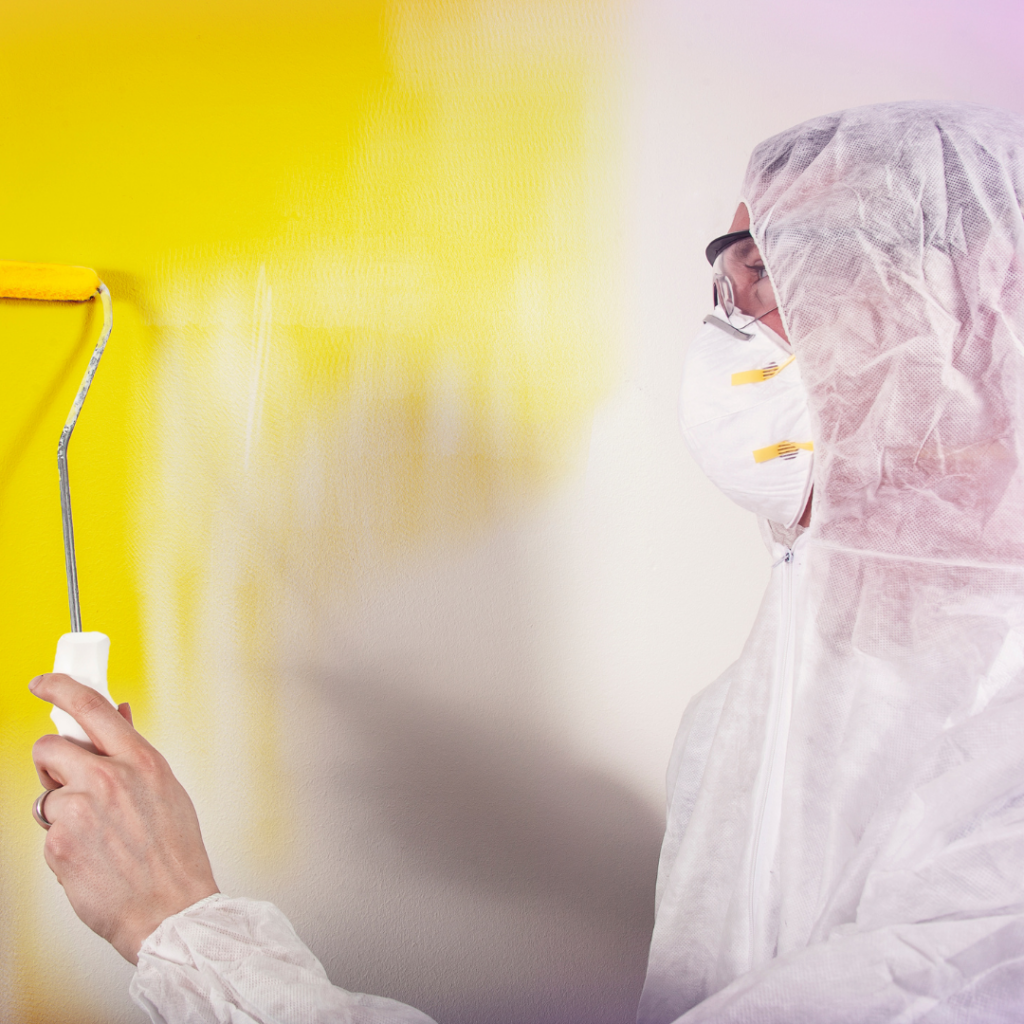
There are a number of ways you can try to avoid pain staining your clothes when doing your next DIY painting project.
Wear Protective Clothing
Protective painting overalls are designed to cover your clothes, allowing you to work freely and with the peace of mind that your clothes won't become stained with paint splatters.
Use Masking Tape
Masking tape, also known as painters tape is a must have tool when painting your home. It prevents paint bleeding into unwanted areas, creating clean and crisp lines between colours, while protecting delicate surfaces like trim and moulding.
Establish a Designated Workspace
A dedicated workspace allows you to organise your painting supplies, such as brushes, rollers, and drop cloths, neatly and efficiently. It also reduces the risk of spills and splatters getting onto your floors or furniture. Try to have this workspace in a well ventilated area if possible.
Lay Down Dust Sheets
Dust sheets will protect your furniture and floors from paint splatters and drips. This will save you a lot of time and effort when it comes to cleaning up after you've finished painting.
Feeling ready to take on your next painting project at home? Get everything you need to get started by visiting the paint and decorating area of our website and store today!